Tillandsia disticha
Click thumbnails for full size, scaled to a new window.
Tillandsia disticha
Species. Ecuador.
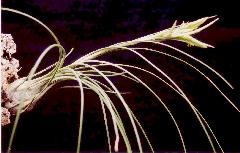
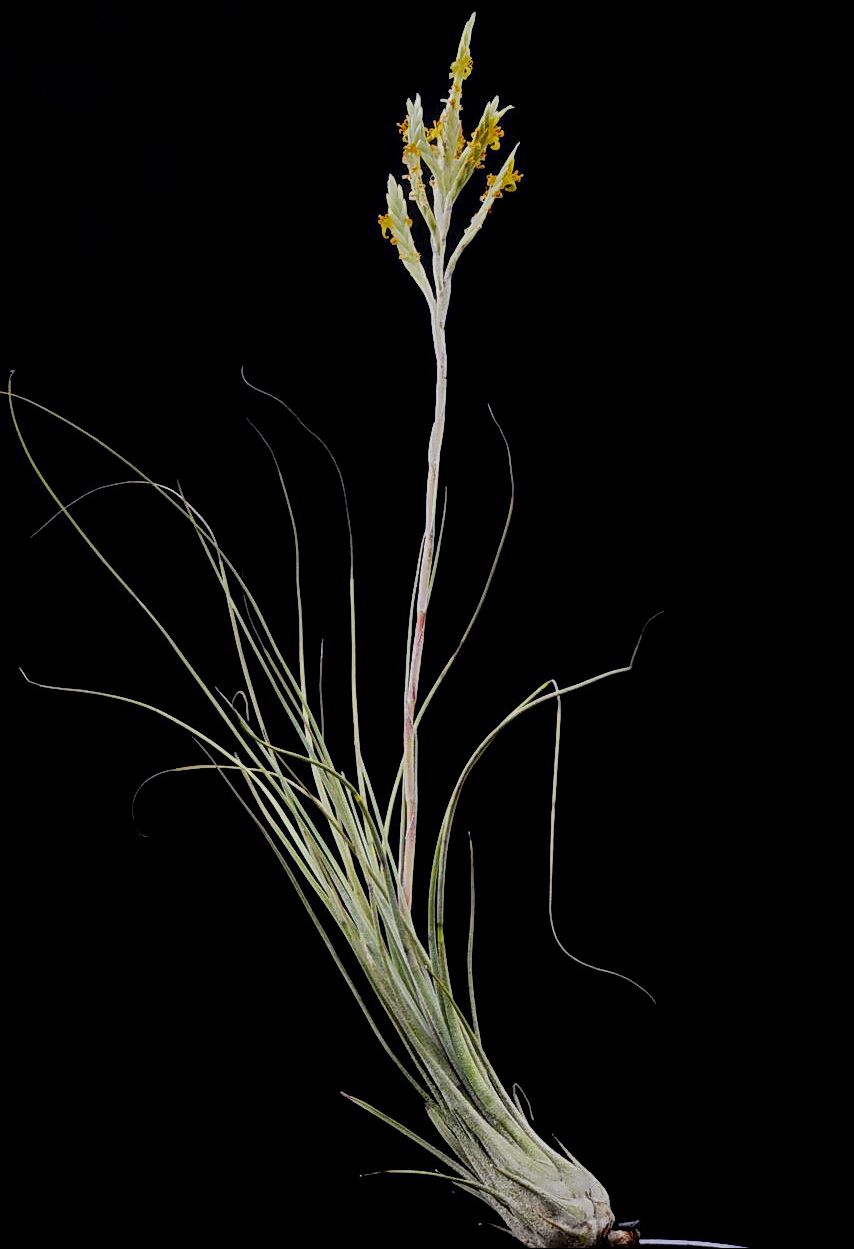
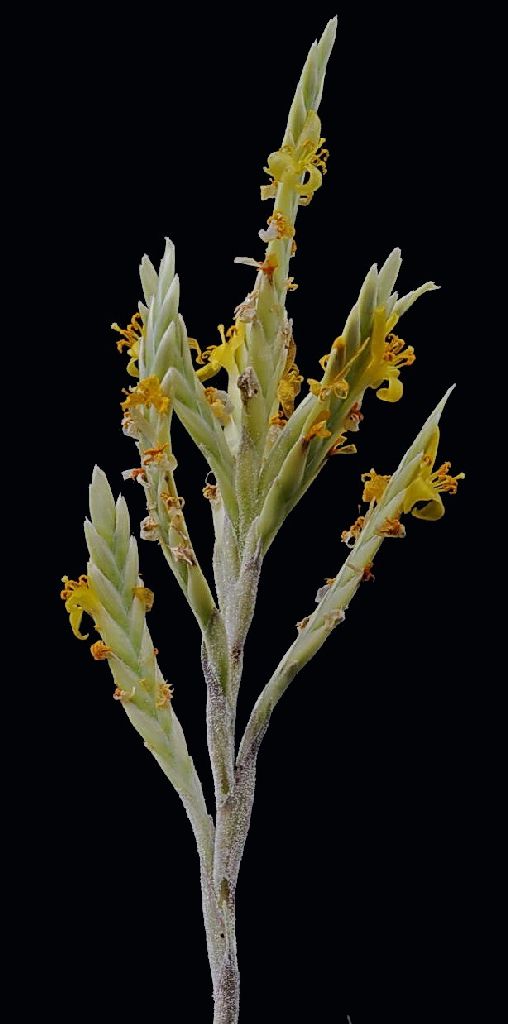
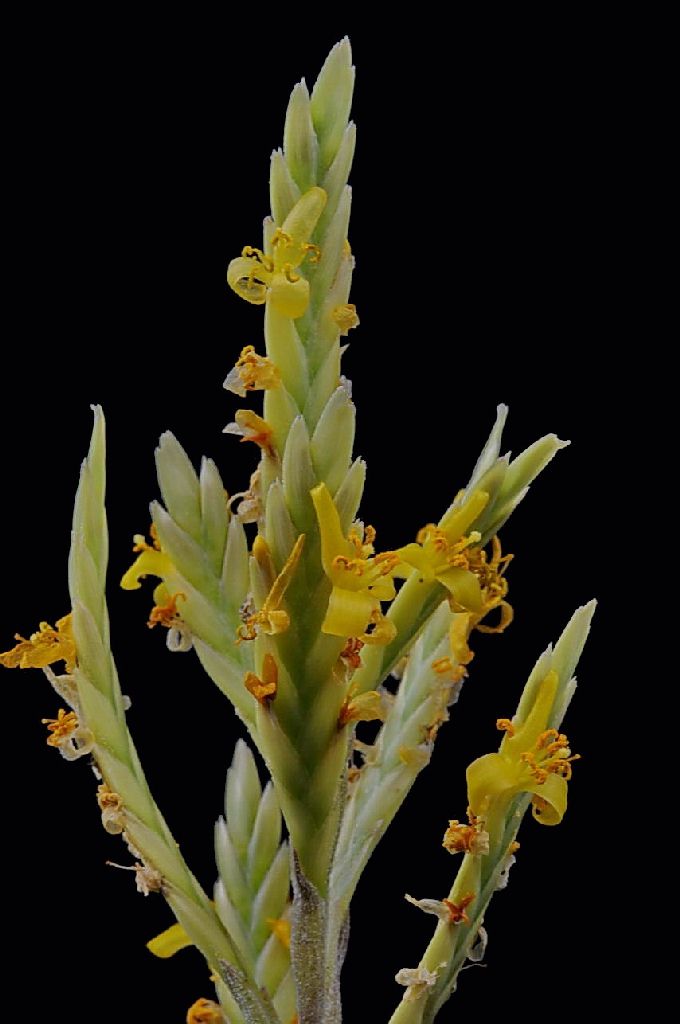
| Green form. Ken Woods 10/04. |
Peter Tristram 01/12. |
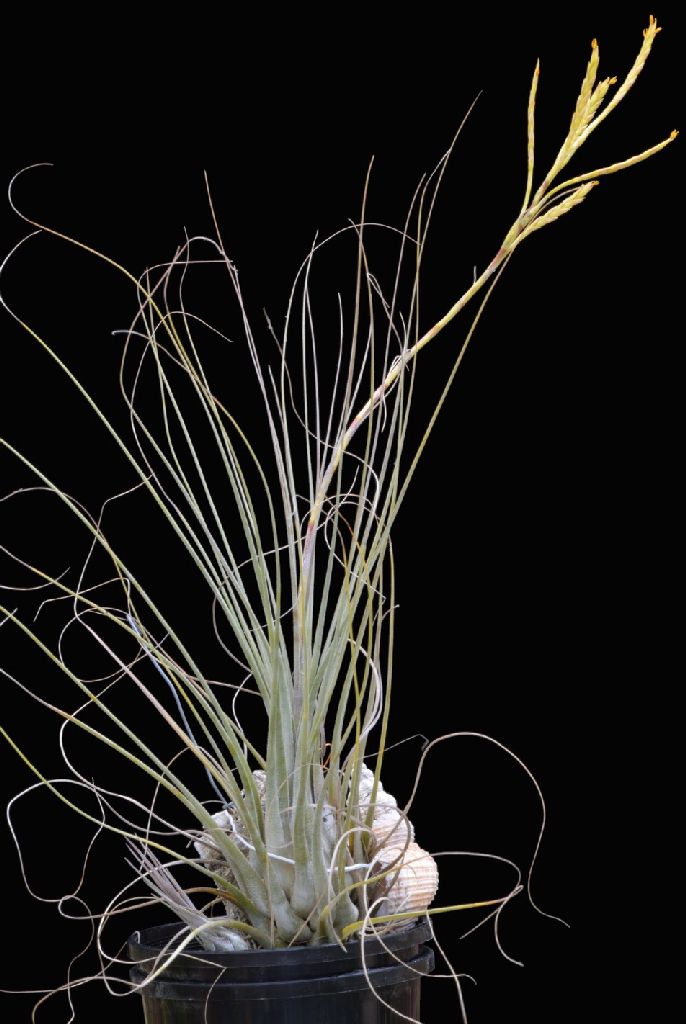
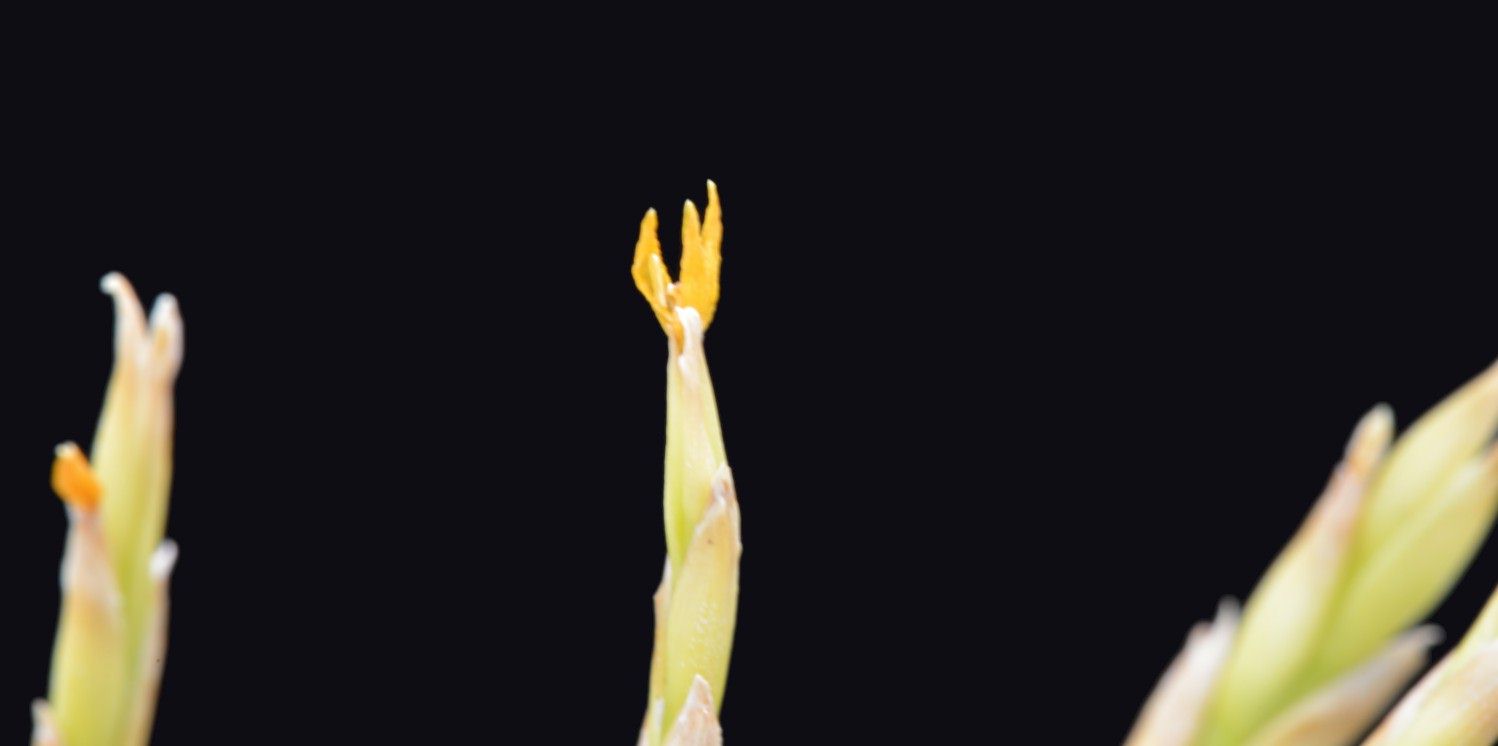
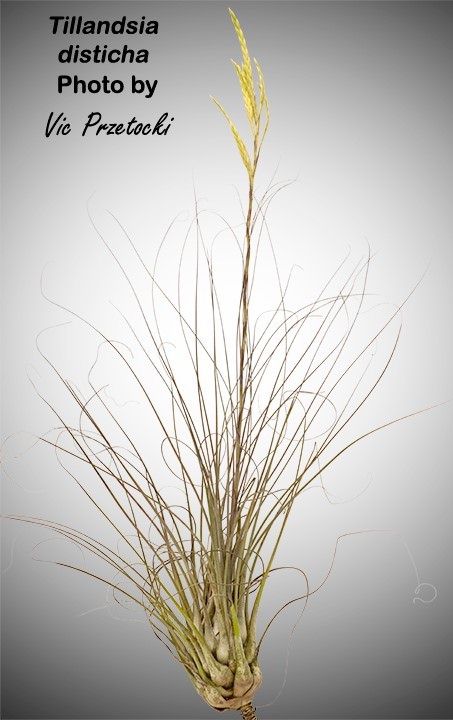
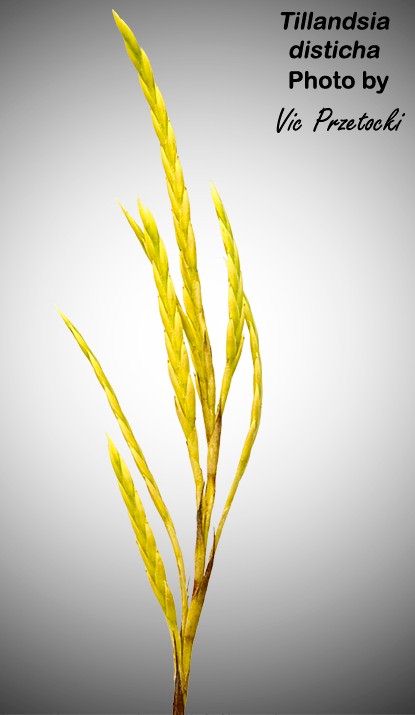
| George Nieuwenhoven 12/16 |
Vic Przetocki 06/20 |
Peter Tristram ... "Do you check your Till flowers for fragrance? In fact many broms have fragrant flowers, sometimes only at certain times of the day too. This form of T. disticha, from Knize, surprised me by being delicately scented in the morning, a fragrance worthy of a cultivar label! It is a form of this species that had turned up in most of my more recent Knize shipments but has only once survived the dreaded gas. Up to 80% of his shipments generally died. :-( "
George Nieuwenhoven ... "has been doing it's thing for a while, one would hardly grow it for the beautiful flowers but it is interesting anyway, it produces a new pup on a short stolon."
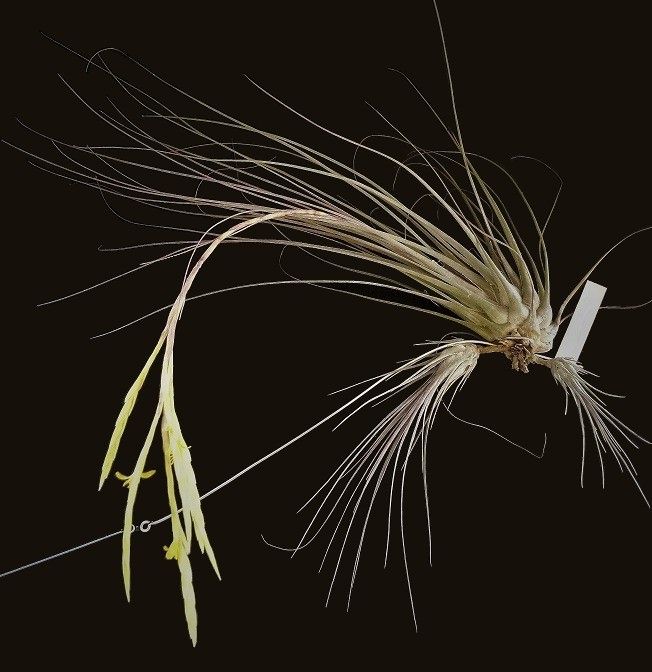
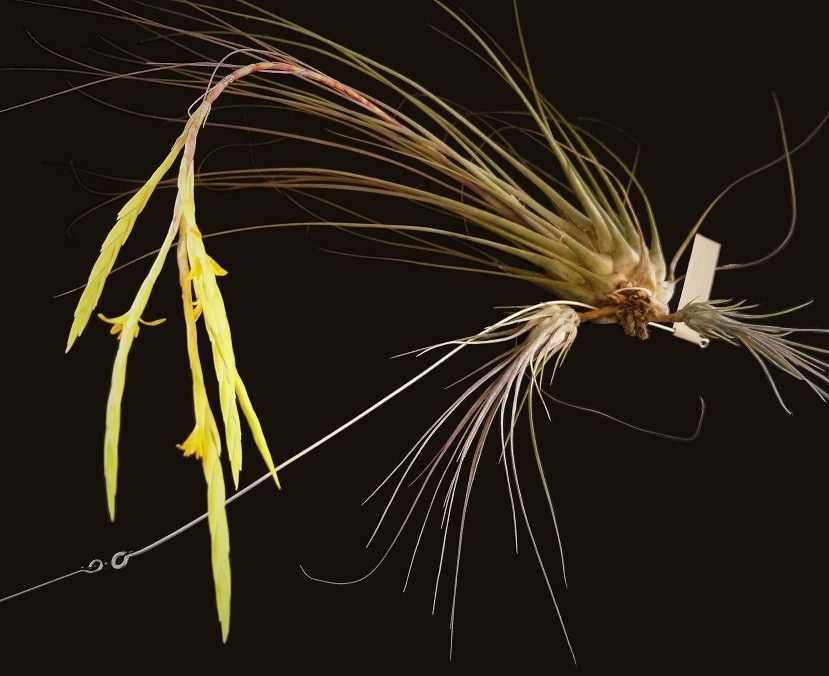
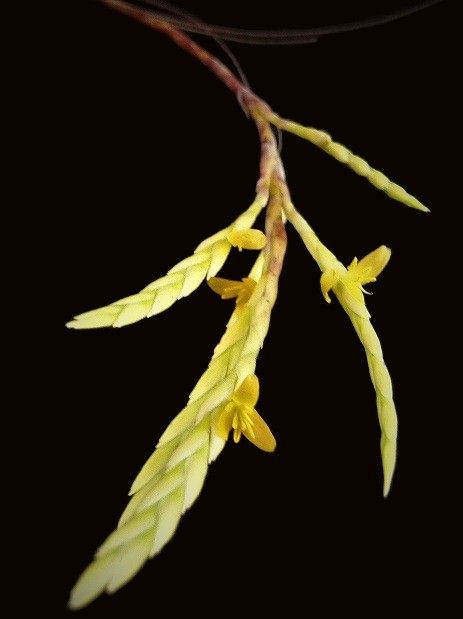
| Steve Molnar 07/20 as 'maxima' |
Steve Molnar ... "Has taken quite a while for the flowers to come out, but worth the wait."
Pam Butler ... "Good colour in the flowers. I remember mine being more cream I thought."
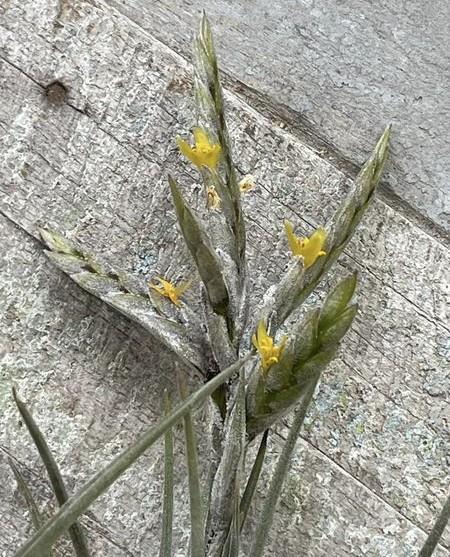
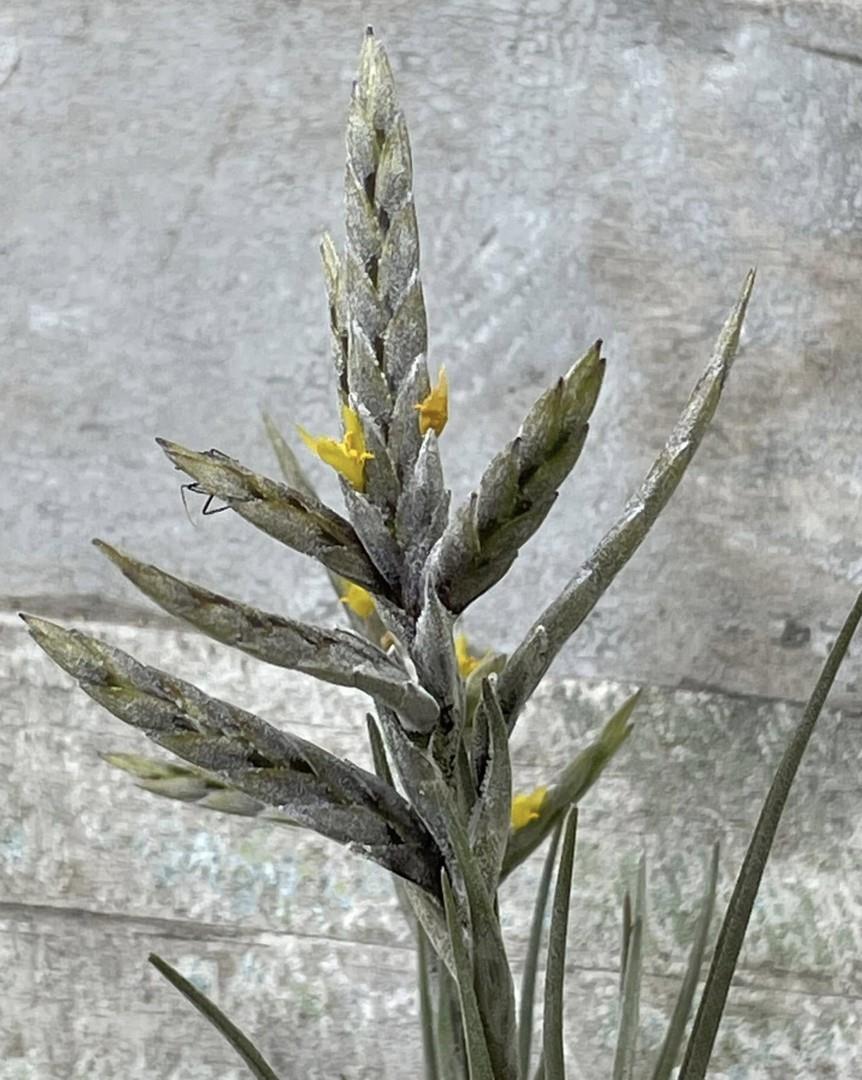
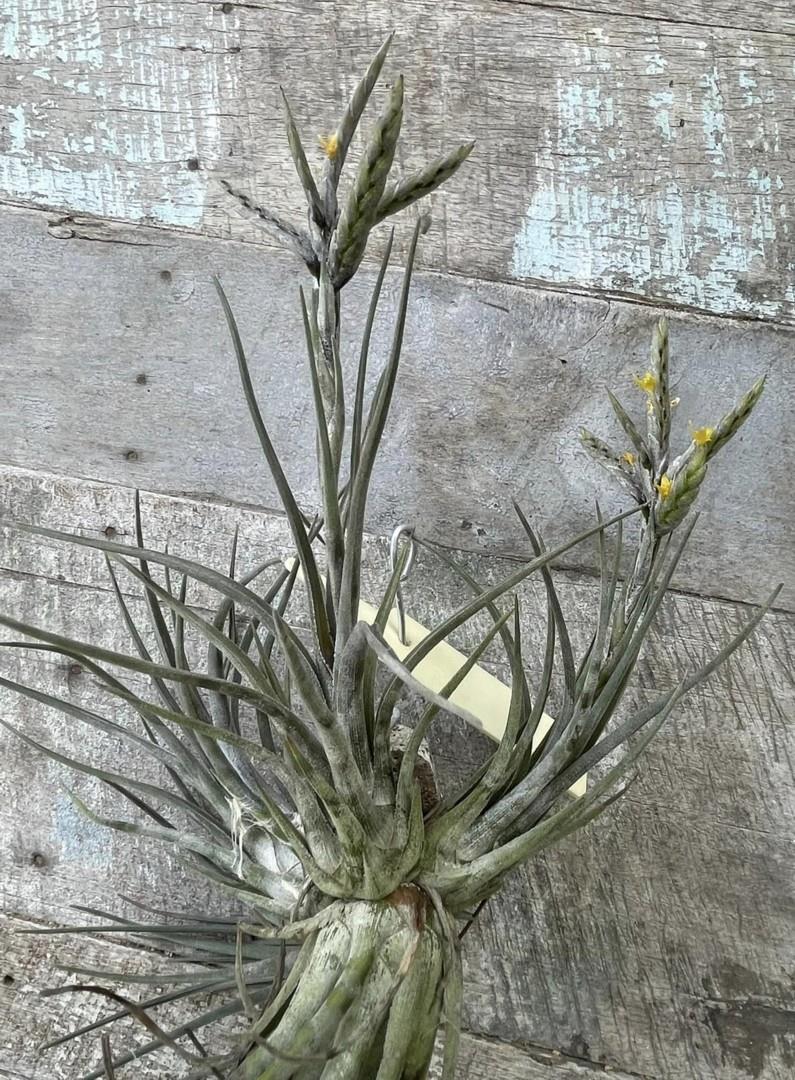
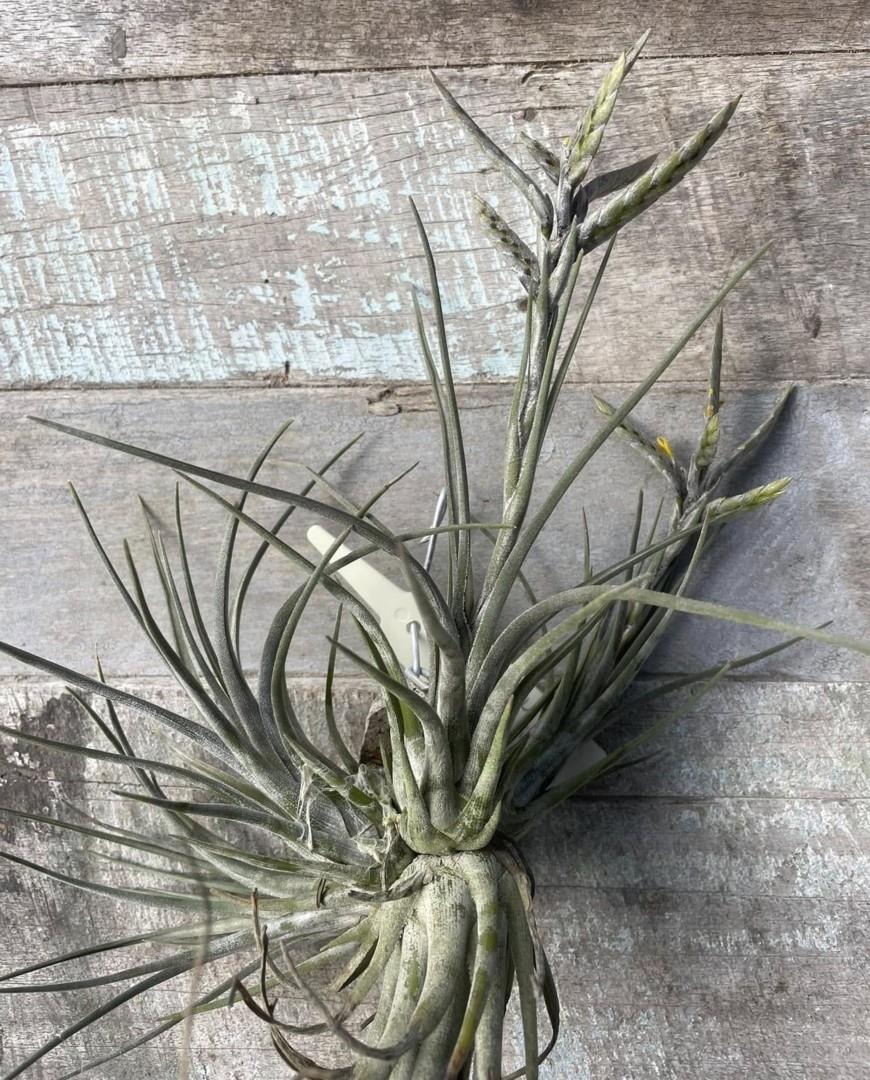
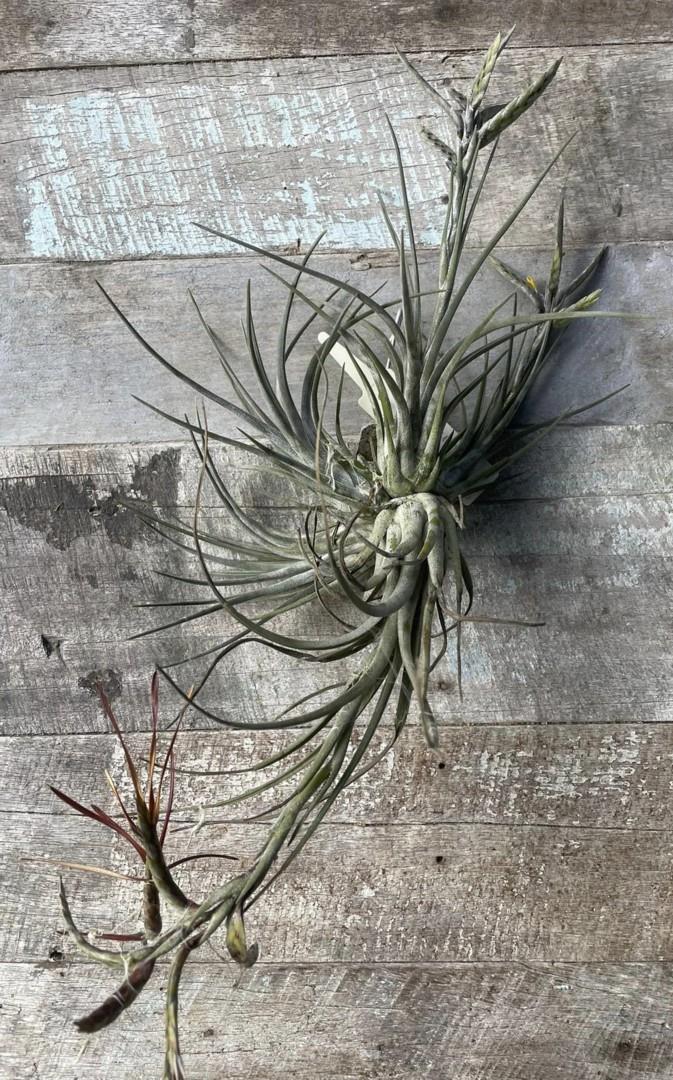
| Bruce Dunstan 11/24 "small stiff form" |
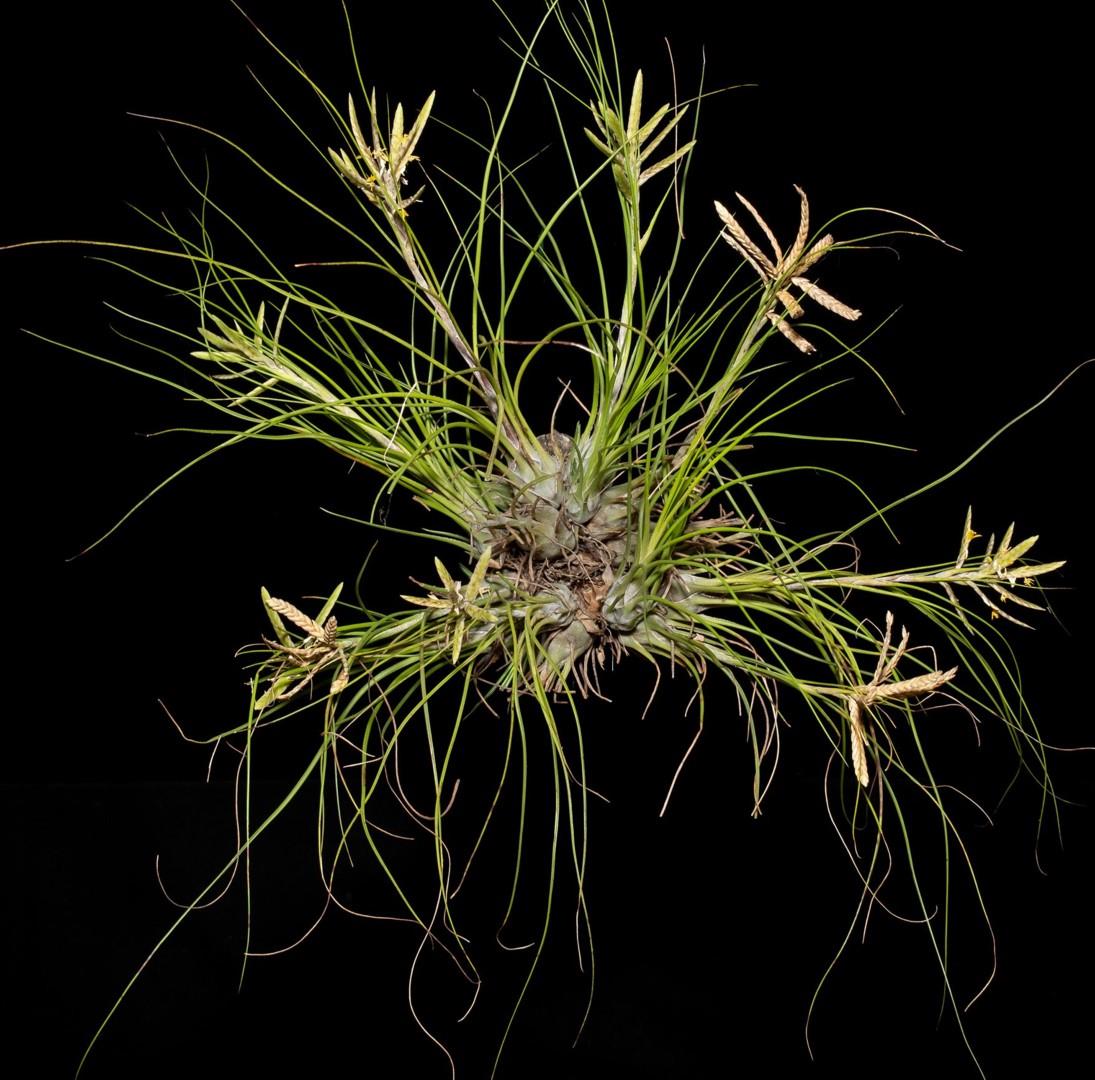
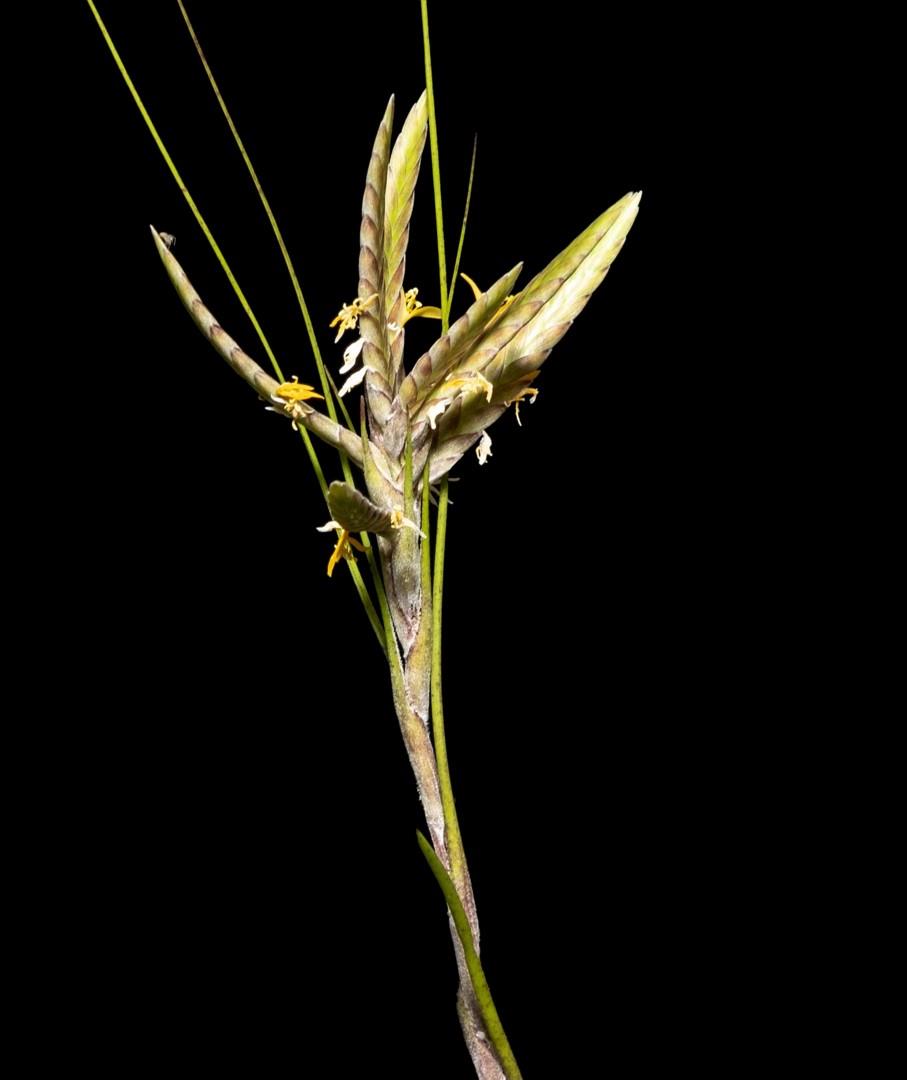
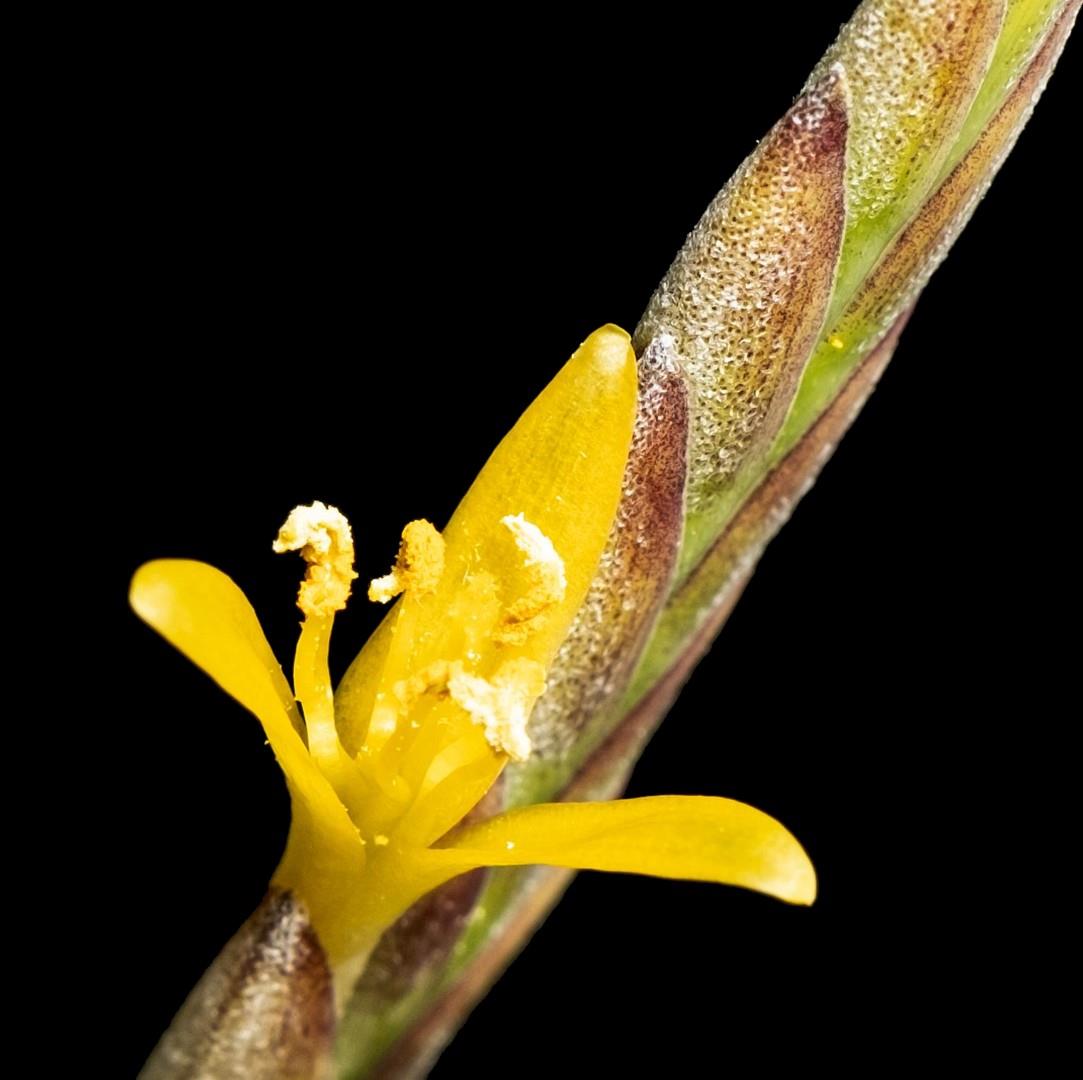
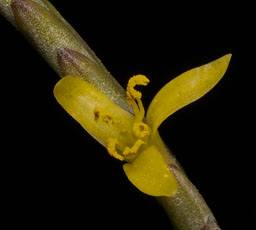
Tillandsia disticha Humboldt, Bonpland & Kunth, Nov. Gen. & Sp. 1: 292. 1816.
Tillandsia disticha var gracillima Mez, DC. Monogr. Phan. 9: 777. 1896. Syntypes. Guayaquil, Ecuador, Haenke s n (PR n v). Esmeraldas, Ecuador, Lehmann 731 (G-B).
Desc from S&D p777
Plant stemless, flowering 15-65 cm high.
Leaves 1-5 dm long, covered with appressed cinereous scales;
Sheaths broadly ovate or orbicular, forming a globose pseudobulb 2-4 cm in diameter; Blades involute-subulate, 3 mm wide, filiform-attenuate.
Scape erect or ascending, slender, shorter than the leaves;
Scape-bracts imbricate, lanceolate, filiform-laminate, lepidote with larger scales on the margins.
Inflorescence digitate from a few spikes or rarely simple;
Primary bracts lanceolate, acuminate, much shorter than the spikes;
Spikes subsessile, linear, 4-6 cm rarely to 14 cm long, 8 mm wide, dense, complaŽnate. Floral bracts triangular, acute, 6-10 mm long, equaling or exceeding the sepals, carinate, nerved, lepidote to subglabrous;
Flowers subsessile.
Sepals acute, carinate, glabrous;
Petals 13 mm long, yellow, blade narrowly lanceolate;
Stamens included.
Type. Humboldt & Bonpland3455 (holotype P, GH photo), Lucarque, Loja, Ecuador ("Peru"), Aug 1802.
DISTRIBUTION. Saxicolous and epiphytic in dry habitats, 10-2100 m alt, Colombia, Ecuador, Peru.
COLOMBIA. NARINO: Isla El Morro Grande, Jan 1942, Dryander 2576 (F, US); Tumaco, Apr 1960, DeLeon 369 (US). ECUADOR. ESMERALDAS: Atacames, Hinds s n (K); EsmeralŽdas, 12 Oct 1963, Gilmartin 865 (US). MANABI: Manabi, Eggers 15195 (L, P); Jipijapa, 10 Oct 1952, Fagerlind & Wibom 558 (S, US); Fosagua, Mille 1991 (F). GUAVAS: Guayaquil, Edmonstone s n (K); Oct 1890, Sodiro 171/27 (B, B photo 1249/29); Palme to Las Americas, 28 Sep 1952, Fagerlind & Wibom 354 (S, US); Colouche, May 1959, Harling 5018 (S, US); Ayangue, 24 Mar 1962, Gilmartin 645 (US); Palmica, Aug 1965, Gilmartin 1183 (US). ORO: Rio Calera, Zaruma, Lehmann 5301 (F); Balao, Jan 1892, Eggers 14200 (US); Machala to Puerto Bolivar, 26 Aug 1923, Hitchcock 21105 (GH, US); Rio Amarillo, Portovelo, 22 Aug 1943, Steyermark 54037 (F, GH); Passaje, 28 Aug 1954, Rauh & Hirsch E-7 (US); Santa Rosa, 29 Aug 1954, Rauh & Hirsch E-4 (US); 11 Mar 1955, Asplund 15662 (S); Arenillas, 28 Sep 1954, Rauh & Hirsch E-375 (US); Huaquillas, 14 Mar 1955, Asplund 15747 (S). PICHINCHA: Quito, Rauh E-7128 (US). LOS RIOS: Sabaneta, 10 Dec 1879, Lehmann 398 (W); Quevedo, 28 Feb 1955, Asplund 15572 (S, US). BOLIVAR: Balsapamba, JuI 1876, Andre 4061 (K). AZUAY: Cuenca to Ona, km 85-90, 4 Dec 1948, Foster 2614 (US). LOJA: Puente Boqueron to Gonzanama, 9 Oct 1955, Asplund 18071 (S); Porto Velo, 29 Nov 1948, Foster 2588 (US); km 27, Loja to Catamayo, 10 Aug 1965, Gilmartin 1125 (US); La Toma, Catamayo Valley, 20 Oct 1965, Knight 625 (US). PERU. TUMBES, Zarumilla: Pocitos to Zarumilla, 25 Apr 1955, Ferreyra 10617 (US, USM). PIURA: Cerro Prieto, Haught 214 (GH); 3 Feb 1929, F-126 (F); Abraporculla Pass, 52 km east of Olmos, 9 Jan 1964, Hutchison 3490 (UC). CAJAMARCA, Contumaza: Cerro Calbayuque, 20 Feb 1966, Sagastegui 6118 (TRP, US). LIBERTAD, Bolivar: Tulpac to Chorobamba, 26 May 1960, Lopez & Sagastegui 3159 (TRP, US); Trujillo: Cerro Campana, 30 Aug 1961, Lopez ,Sagastegui & Sanchez 3648 (TRP, US).
Detail from Gilmartin 1972
2. Tillandsia disticha H. B. K., 1816 (Genera et Species Plantarum, vol. 1) p. 22; Smith, 1957, p. 117.
PLANT ca. 30 cm tall but up to 65 cm tall occasionally, ca. 15 cm in diameter, growing in aggregations of 5 to 20 interconnected individuals, plant base in form of pseudobulb ca. 2.5-6.0 cm long by ca. 3.5 cm wide;
LEAVES 20-30 cm long, blades 2-3 mm wide, involute, spreading lepidote, apex filiform, bright green to olive green; sheaths ca. 2.5 cm long by 3.0 cm wide, conspicuous, round;
SCAPE ca. 3 mm in diameter, erect to ascending;
SCAPE-BRACTS 1.5-2.5 cm long, blades 2 mm wide, spreading, imbricate;
INFLORESCENCE 7.0-12 cm long by ca. 4.0 cm wide, bipinnate, lax, tending to be digitate with 6 to 10 spikes, lepidote;
PRIMARY BRACTS ca. 2.0 cm long by 8 mm wide, densely lepidote, apex attenuate to filiform;
SPIKES 5.0-10 cm long by 6 mm wide having a stipe ca. 8 mm long, distance between spikes ca. 1.0 cm, having 10 to 20 flowers per spike;
FLORAL BRACTS 0.7-1.0 cm long by 4 mm wide, imbricate, nerved, papery, lepidote without. mostly glabrous within, ovate, carinate;
SEPALS ca. 8 mm long by 2 mm wide, glabrous, carinate, acute;
PETALS ca. 1.3 cm long, usually yellow but occasionally white with age;
CAPSULE length variable, 2.0-6.0 cm long, always slender.
MATERIAL EXAMINED: Humboldt and Bonpland 3455 (P, TYPE; GH, photo) locality given as Peru, probably Ecuador, Prov. Loja; Foster 2614 (US) epiphytic, dry, windy area, km 85-90 Cuanca-Ona, Prov. Azuay, 11000 m, 4 Dec. 1948; Fagerlind and Wibom 354 (US) between Palmar and Las Americas, Prov. Guayas, near sea level, 28 Sept. 1952; Harling 4018 (US) epiphytic in Jacquinia (coastal "barbasco") Colonche, Prov. Guayas, 6-7 May 1959; AJG 645 (US) 2 km south of Ayangue, cactus-scrub, Prov. Guayas, 24 March 1962; AJG 1183 (US) near Palmar, open scrub, Prov. Guayas, near sea level, Aug. 1965; Sodiro 171/17 (B; US, AJG, photo) between Balao and Guayaquil, Prov. Guayas, near sea level, Oct. 1890; AJG 865 (US) epiphytic on Gnazuma ulmifolia Lam. ("guasmo") ca. 2 m from ground, in pasture, km 5 Esmeraldas-Santo Domingo, Prov. Esmeraldas, 20 m, 12 Oct. 1963; .AJG 1125 (US) epiphytic on Prosopis, in semi-closed scrub, km 27 Loja Catamayo, Prov. Loja, 10 Aug. 1965; Fagerlind and Wibom 558 (US) Prov. Manabi, 10 Oct. 1952; Mille, Luis 1991 (F) Prov. Manabi, no date; Eggers 14200 (US) shrubby area near swamp, between Machala and Puerto Bolivar, Prov. El Oro, near sea level, Sept. 1923; Steyermark 54037 (US) epiphytic, along Rio Amarillo, upstream from Portovelo, Prov. El Oro, 640-760 m, 22 Aug. 1943; Foster 2588 (US) epiphytic, Portovelo, Prov. El Oro, 1948; Rauh, Hirsch E 375 Arenillas, Bombax-scrub, Prov. El Oro, 200 m, 28 Sept. 1957; Rauh, Hirsch E 7 (US) Paisaje, Prov. El Oro, 300 m, 28 Aug. 1957; Rauh, Hirsch E,4 (US) Santa Rosa, Prov. El Oro, ca. 200 m, 28 Aug. 1957; Rauh, 70128 (US) near Quito, no capsules although well past anthesis, Prov. Pichinche, ca 2000 m; Asplund 15572 (US) epiphytic in Crescentia Quevedo, Prov. Los Rios, ca. 100 m, 28 Feb. 1955.
NOTES: The capsule length may vary from 2.0-6.5 cm long in plants of the same clone of T. disticha H. B. K. Flowering time seems to be approximately from August through October in the Sierra and from about February to May on the coast during typical years. However, during "El Nino" years when rains on the coast greatly exceed the usual 12-25 cm annual precipitation, plants of T. disticha on the coast may flower as early as August.
A cultivated specimen of Foster not cited above has unusually long spikes, one spike measuring 22 cm in length. The holdfasts of this species are well developed and in coastal specimens often have round or elliptic nodules. These are apparently insect produced and measure 2-4 mm long by 2 mm in diameter with small holes at each end. They are similar to the nodules found on the holdfasts of some individuals of T. latifolia var. divaricata (Benth.) Mez. COLOMBIA, PERU.
Updated 20/02/25



















